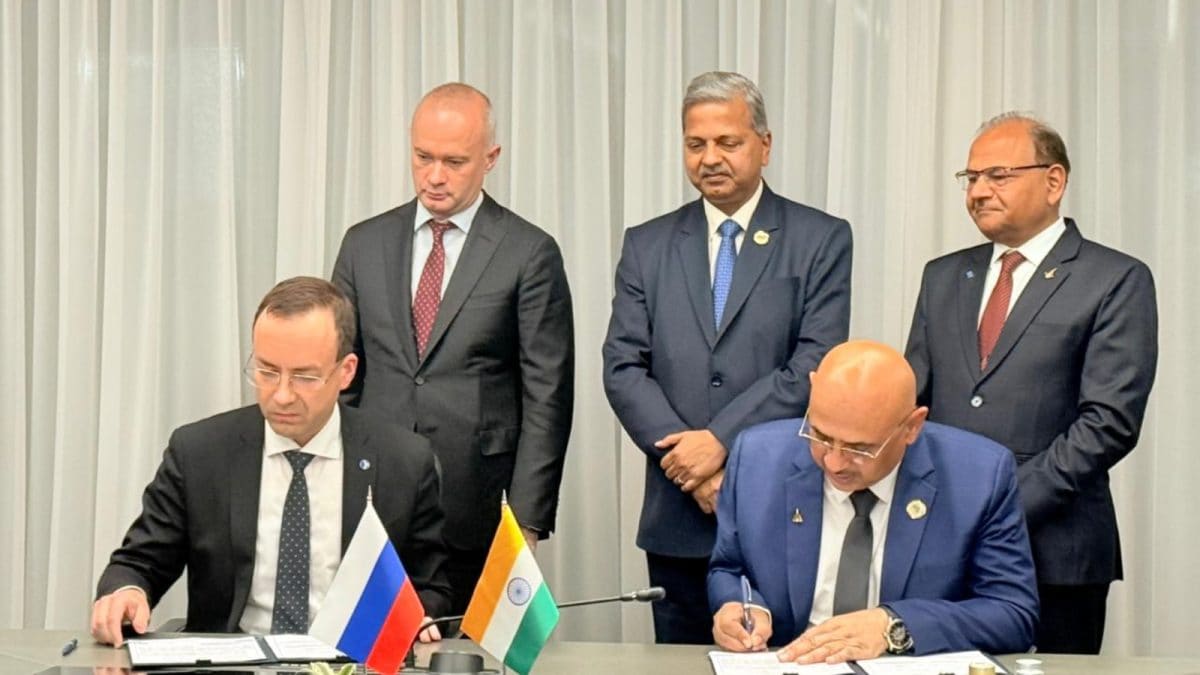As Netflix film fuels debate over nuclear war, Russia claims to have tested a 'unique weapon' in real life. A nuclear-powered cruise missile with alleged unlimited range that some believe could potentially redefine modern deterrence.

Russia tested its nuclear-powered cruise missile named the Burevestnik, Russia's top general told Putin. (Photo - Reuters)
Netflix audiences recently got a heavy dose of geopolitical fiction with the release of The Diplomat’s latest season and the global streaming of A House of Dynamite (AHD) earlier this month.
Without spoiling the endings, both stories shared one common element — a weapon designed to shatter the comfort of security long associated with Western defence systems.
The Diplomat’s latest plot revolves around the successful deployment of Poseidon — a supposed nuclear-powered, long-range, nuclear-armed autonomous torpedo that Russia has claimed to be developing for years but has not been showcased in action. Meanwhile, Kathryn Bigelow directed AHD questions the reliability of US missile defence systems in the event of a nuclear strike on American soil. Following its Netflix release, the Pentagon reportedly had to issue an internal memo clarifying that the United States’ missile defence capabilities are far superior to what the movie depicts.
So when Russian President Vladimir Putin announced on Sunday that Russia had successfully tested the 9M730 Burevestnik — a surface-to-land, nuclear-powered and nuclear-capable cruise missile — calling it a 'unique weapon,’ it raised an inevitable question: is life finally imitating Netflix?
Both Poseidon and Burevestnik have been part of public and pop-culture discussions since 2018, when Russia unveiled a series of six superoruzhie (“super weapons”). Of these, only two — the Kh-47M2 Kinzhal and 3M22 Zircon — have seen real-world application. Western experts have long questioned the lack of verified data on the actual performance of Burevestnik and Poseidon, often dismissing their ‘exaggerated abilities’ as part of Russia’s strategic narrative.
Authoritative details about Burevestnik’s design and functionality remain scarce, but India Today’s Open-Source Intelligence (OSINT) team has created a provisional animation model of the missile based on available Russian media reports.
A tentative design of the 9M730 Burevestnik cruise missile. Credit: India Today OSINT
BUREVESTNIK: A SILVER BULLET ?
Before assessing the impact of Russia’s new missile, it’s worth understanding what Moscow already had in its arsenal. Russia continues to maintain long-range Intercontinental Ballistic Missiles (ICBMs) capable of delivering nuclear warheads across continents — enough to destroy entire cities, as dramatised in AHD.
So why does a cruise missile matter? The answer lies in how defence systems respond to different threats.
Ballistic missiles are rocket-propelled for a brief phase before following a curved, high-altitude trajectory — making them easier (at least in theory) to detect and track using radar and missile-defence systems. Cruise missiles, by contrast, behave more like aircraft, powered by jet engines and equipped with wings. They travel at low altitudes — sometimes less than 100 meters above ground — which makes radar detection difficult. Their unpredictable flight paths complicate interception but come at the cost of speed and range, as low-level flight consumes more fuel.
The Burevestnik, however, is nuclear-powered — giving it potentially limitless range and endurance. According to Russia’s top military general, Valery Gerasimov, the missile recently travelled 14,000 km and stayed airborne for about 15 hours, still short of its maximum capability. Russian defence experts have since claimed the missile has an ‘unlimited range,’ theoretically allowing it to strike anywhere on Earth.
Many analysts argue that Russia already possesses sufficient capability to threaten adversaries in a nuclear conflict. No missile defence system is perfect — its efficiency depends on multiple factors, including deployment, reload intervals, intelligence quality, threat assessment, and prioritisation.
This was evident during Iran’s recent multi-phase True Promise missile strikes on Israel. According to OSINT analyst Sam Lair, Fellow at the Foreign Policy Research Institute (FPRI), during True Promise I — involving roughly 120 ballistic missiles, 30 cruise missiles, and 170 drones — only about nine ballistic missiles reached Israeli territory. In True Promise II, however, after Iran changed tactics, at least 44 impacts were observed. Lair noted that by oversaturating Israeli defences with a larger number of faster, more reliable ballistic missiles, Iran reduced Israel’s tactical warning time.
Though the comparison between Russian and Iranian missile capabilities is imperfect, the conflict illustrated a key lesson: ballistic missiles, not cruise missiles, proved more effective against advanced western defence networks.
Another possibility is that NATO could adapt its missile-defence systems to counter nuclear-powered cruise missiles. The Burevestnik’s subsonic speed, while offering endurance, could also make it vulnerable to modern interceptors and aircraft.
In short, while Russia’s so-called ‘wonder weapon’ adds uncertainty to an already unpredictable nuclear landscape, it doesn’t make the Burevestnik a silver bullet that changes the rules of warfare. If anything, by raising the stakes, it might only help escalate conflicts faster — much like A House of Dynamite.
- Ends
Published On:
Oct 28, 2025
Tune In

 3 hours ago
3 hours ago



















